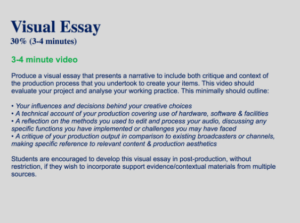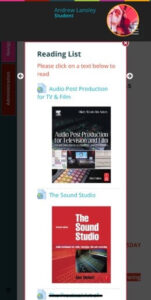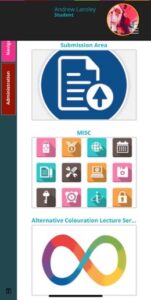| Equity & Diversity
Lecturing is a Superb Job for Learning
My name is Andrew Lansley and I am a Senior Lecturer in Music and Audio within the School of Media at the University of Gloucestershire. I think it’s a great privilege that our Equality and Diversity Manager has asked me to write a contribution to this blog and I hope to be able to share my thoughts on working to create inclusive environments and on what I think we do well at our institute.
In this post I’d like to discuss the key attributes of working with students and technology, as recommended in The University’s current Strategic Plan:
- ‘providing teaching support for learning of the highest quality’ – which informs part of the transformative practice we seek to develop in the classroom.
- ‘use technology to support the learning experience’
- ‘work with students as partners in creating knowledge and ensuring that they are actively involved in the management of their own learning’.
Lecturing is a superb job for learning.
As an adult with ASC I guess I have a particular insight into the challenges some students face when approaching their studies at University. During my time as an undergrad I struggled to engage with my course and cohort, despite loving the subject. My challenges were never with the content of the course, but in finding clear guidance in how I could tackle assessments, in how and what was expected in terms of group working on modules. Socialisation was my biggest struggle – faced with the terrifying prospect of small talk with other students between lectures I instead chose to hide in the toilets alone, reading until my next class.
My own experience has helped me spot signs that a student might be going through similar challenges, especially as these kinds of behaviours might not be obvious to others. It was perhaps because of this I noticed a student in class had downloaded one of my lectures and had begun changing the background colours of the slide as well as the text. I asked why the student had decided to do this, to which she replied that it made it easier for her to read. The student in question had been diagnosed with Asperger’s – a developmental disorder classed as part of autism spectrum conditions.




One of the ways people on the autistic spectrum can be different is through sensory sensitivity. This means that loud, contrasting colours can be off-putting because they are too ‘noisy’ to perceive. My student had changed these black-on-white slides to deep blue text on a light grey background – a much more palatable set of colours for her eyes. I immediately thought that if one student was minded to amend lecture materials, then this was likely an issue for a number of my students. In this case I had a responsibility to ensure as many as possible were included when it came to my lecture preparation.
I discovered there were half a dozen students on the same (or a similar) module, all of whom identified on the autistic spectrum. From here I worked with these students to:
- Develop a colour scheme and touch screen system for accessing their work and reading list via Moodle.
- Discuss the content of the module to create a stronger set of supportive learning materials
- Deliver an alternative lecture format
By utilising the ‘community of practice’ approach to research with these students I found that making them part of developing the curriculum helped them improve engagement, discuss the content of the module more easily and helped me to confront and challenge my own practice




One of the important things to note here is that it wasn’t simply work undertaken between myself and the students that affected this change, it was a number of individuals and departments across the university too:
- Outside of my academic colleagues within my own subject group I could not have constructed a touch screen Moodle and reading lists without the help of Maggie Jensen one of our learning technologists.
- I could not have applied the theoretical framework I discovered as part of my PGCAP studies under the guidance of Ros O’Leary.
- I could not have prepared effectively for my conference (and finding a practical output for this work) without the assistance of our Equality & Diversity Manager Clare Peterson.
This process didn’t just force me to look internally at my own work, but encouraged me to engage even further with colleagues from all around the University of Gloucestershire – something I found very rewarding indeed.
I presented these findings at the Royal Music Association conference on Mental Health & Well-Being at York St John’s in May and have since been wholeheartedly encouraged by the response from colleagues from around the UK and the further opportunities for research I have been presented with as a result. One of the great pieces of feedback I received afterwards was how the University of Gloucestershire seems to be tackling issues of inclusivity and wellbeing head on, with an enviable support network that includes everything from Student Helpzones to our strategic plan as an institute.
It made me proud to be able to share what I feel are some outstanding examples of the kind of cross department/multi agency approach we take as a staff across the university in supporting our students – as well as the positive impact I see this have on them each day in our classes.
If you would like to know more about my experiences and research in this area please get in touch with me via alansley@glos.ac.uk
For further information on some of the ideas discussed in the blog you can take a peek here: Further Information



